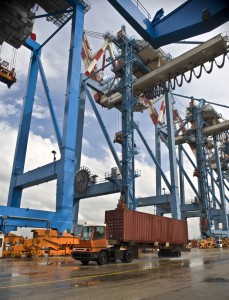
All too many companies select a fulfilment partner without first
ascertaining their abilities with reverse logistics. Reverse logistics
is that part of shipping and logistics services dealing
with the movement of goods back from consumers, usually as a result of
product returns. Not every return is a complete write-off of course, and
a good shipping and logistics service provider should be able to
process returns in such a way as to recapture the maximum value from
them.
The goal of most reverse logistics procedures is to get the returned
goods back into the normal supply stream as quickly as possible, usually
by verifying their good condition and repackaging them at the
fulfilment house so they can be delivered again quickly and
inexpensively.
Returns, ecommerce, and shipping and logistics services
Ecommerce is growing rapidly, and online purchases are becoming the
norm for more and more consumers. Many kinds of online goods, especially
shoes and apparel, must expect very heavy rates of return because their
fit or suitability is difficult to determine online. The more that is
purchased online the more will be returned, and shipping and logistics
services must be prepared to do so efficiently.
A recent study indicates that 85% of consumers said they would stop shopping with a company whose return policies were inconvenient. In the same study, 95% of those who responded said they would continue to use a company whose returns were easy. Clearly, encouraging returns provides a vital competitive advantage, and the more your business model relies on the ability for easy returns, the more vital it is that your shipping and logistics service provider has efficient value recapture systems in place.
How should a shipping and logistics services provider handle returns?
The returns process should be as streamlined as possible to keep your customers happy.First, keep it easy for the customer. Once it was standard procedure to force customers to jump through a few hoops before a return would be accepted, and many were rejected outright. Those days are long gone. Many ecommerce merchants now send return labels with every shipment, just in case. After all, the cost if the sticker is unused is virtually nil.
Next, settle on a formal returns policy. If your process is clear and unambiguous, your customers will know what to expect from you, and most will respect your process. Make sure your internal team, your shipping and logistics services provider, and your customers all have access to the written policy. Make it prominent on your website, and consider printing it on the reverse of the shipping documents or invoice.
If your 3PL does offer enhanced reverse logistics procedures, find out what they are, and ask how they can be adapted to your products and procedures. Many can offer management of the returned products, and inspect, repackage or even repair/replace parts to make the product resalable. Many can also take charge of the recycling or disposal of unsalable or destroyed merchandise or coordinate returns to your vendors. In any case, get to know what your shipping and logistics services provider can offer in terms of reverse logistics.
In this economy, none of us can afford to abandon the value of returned products.






